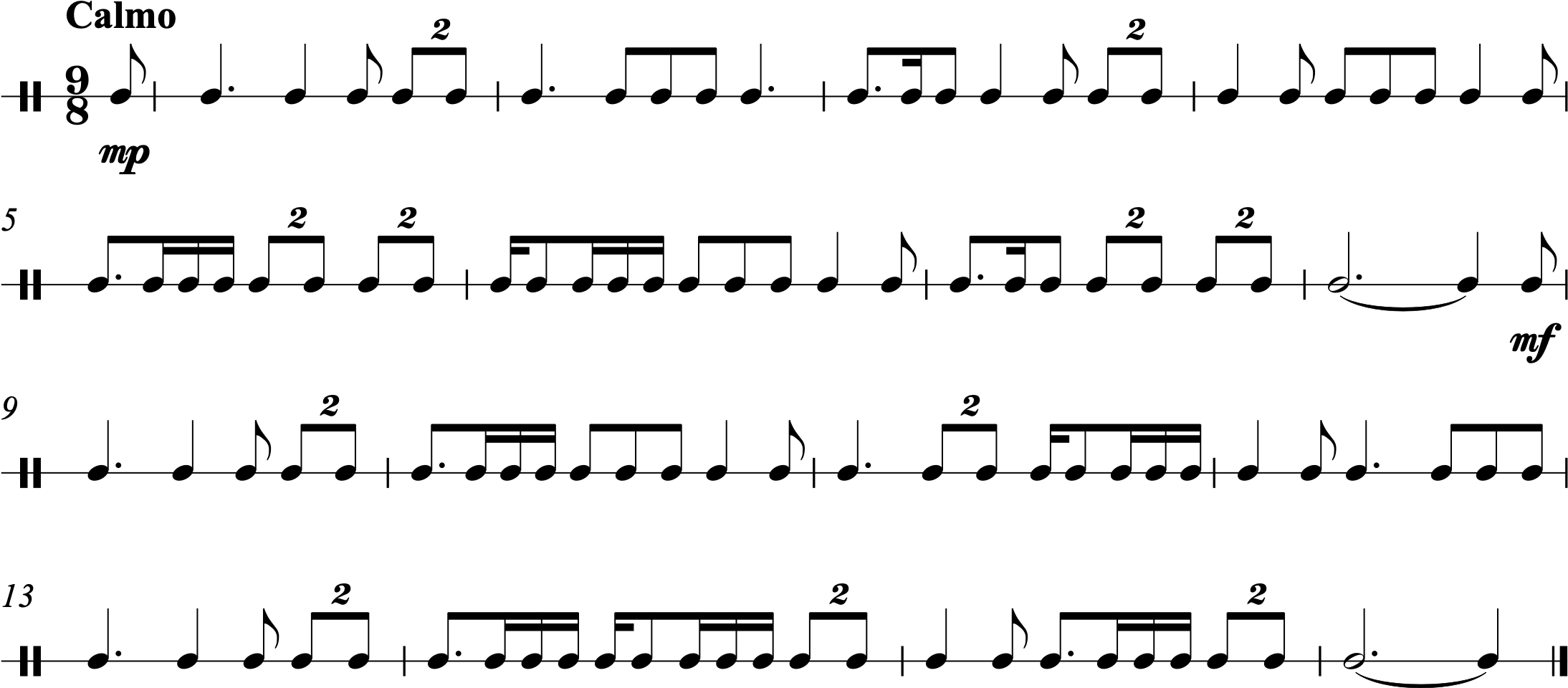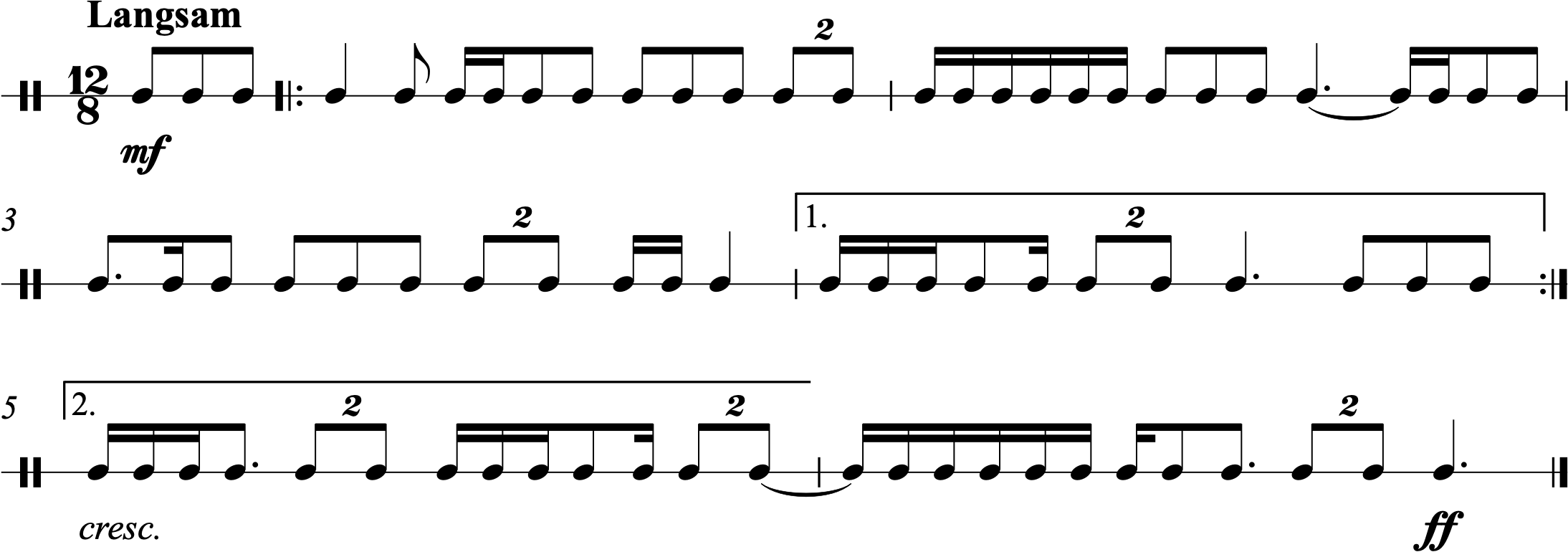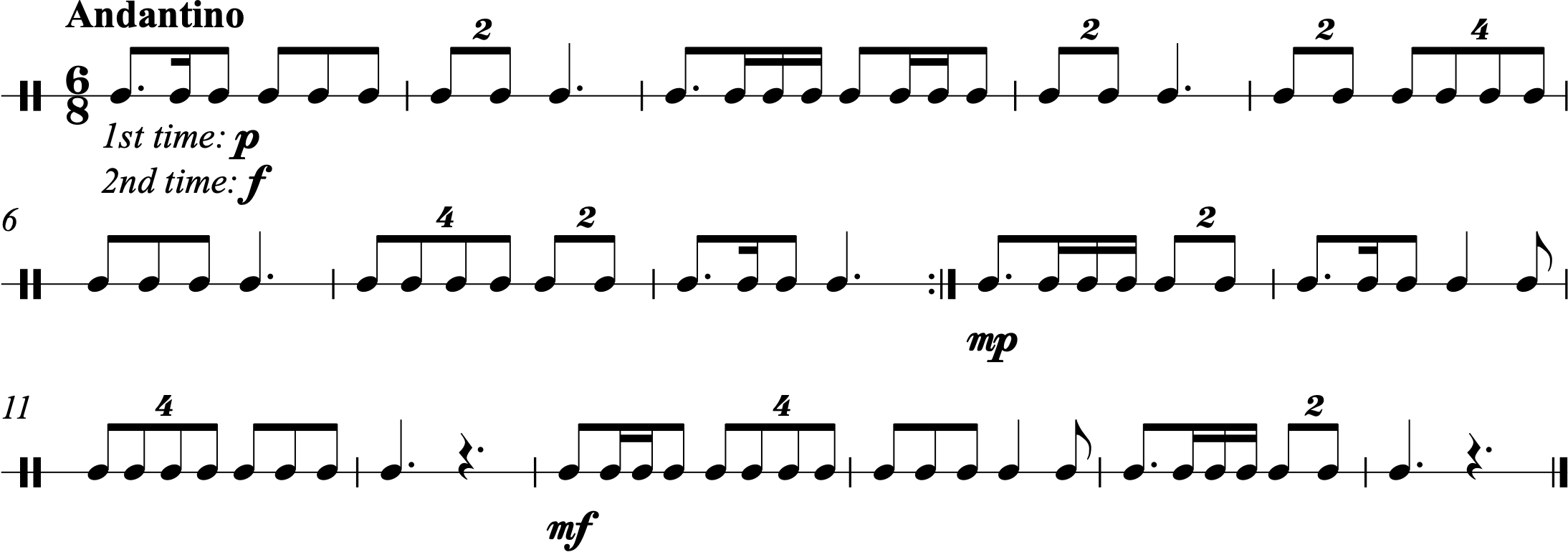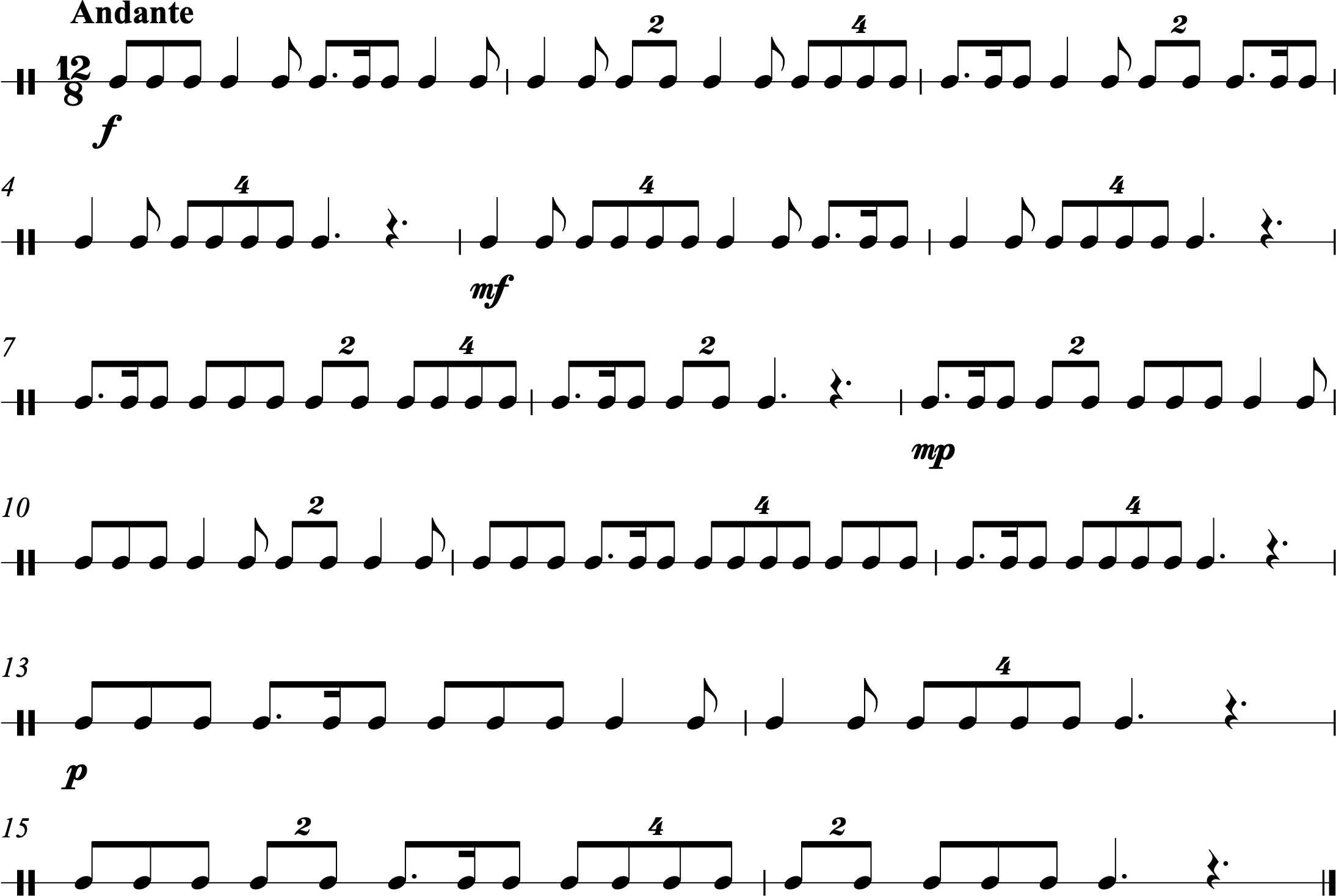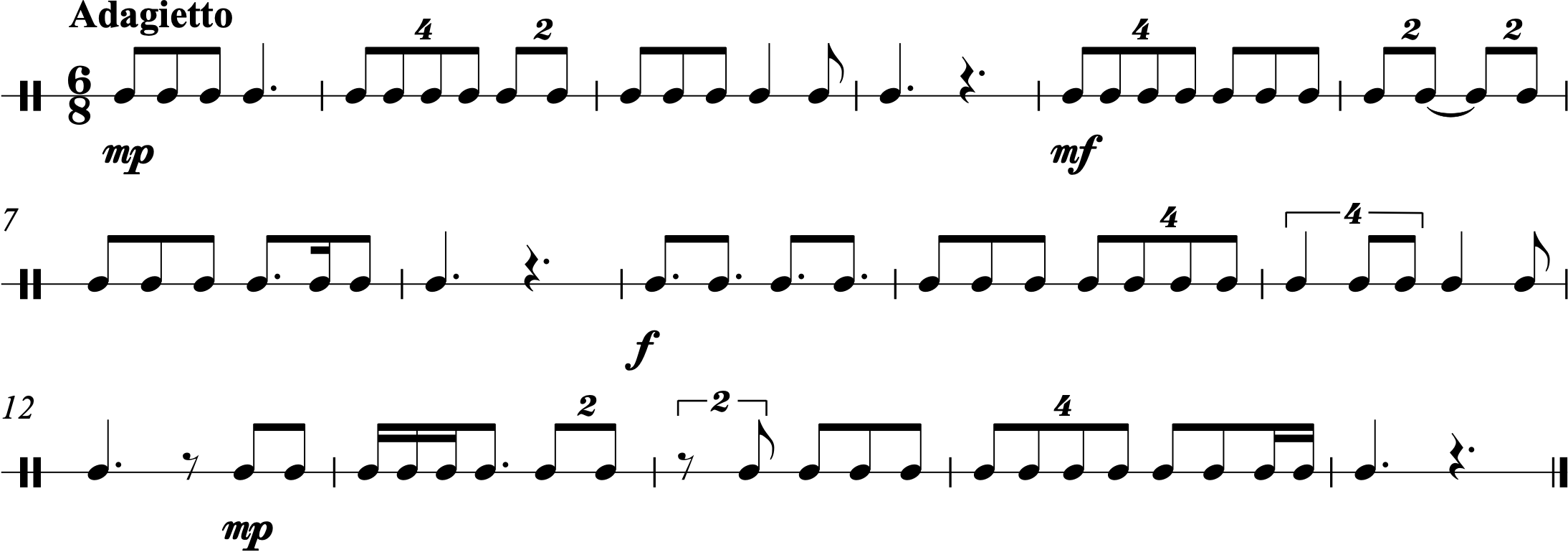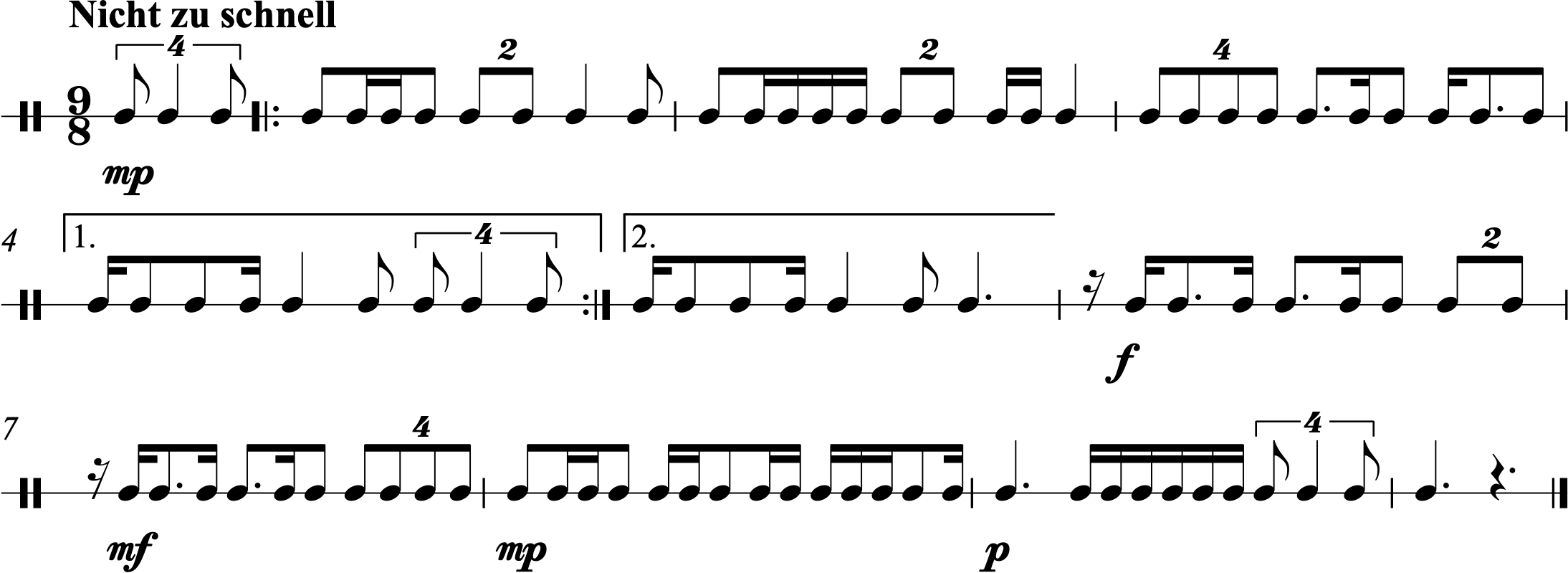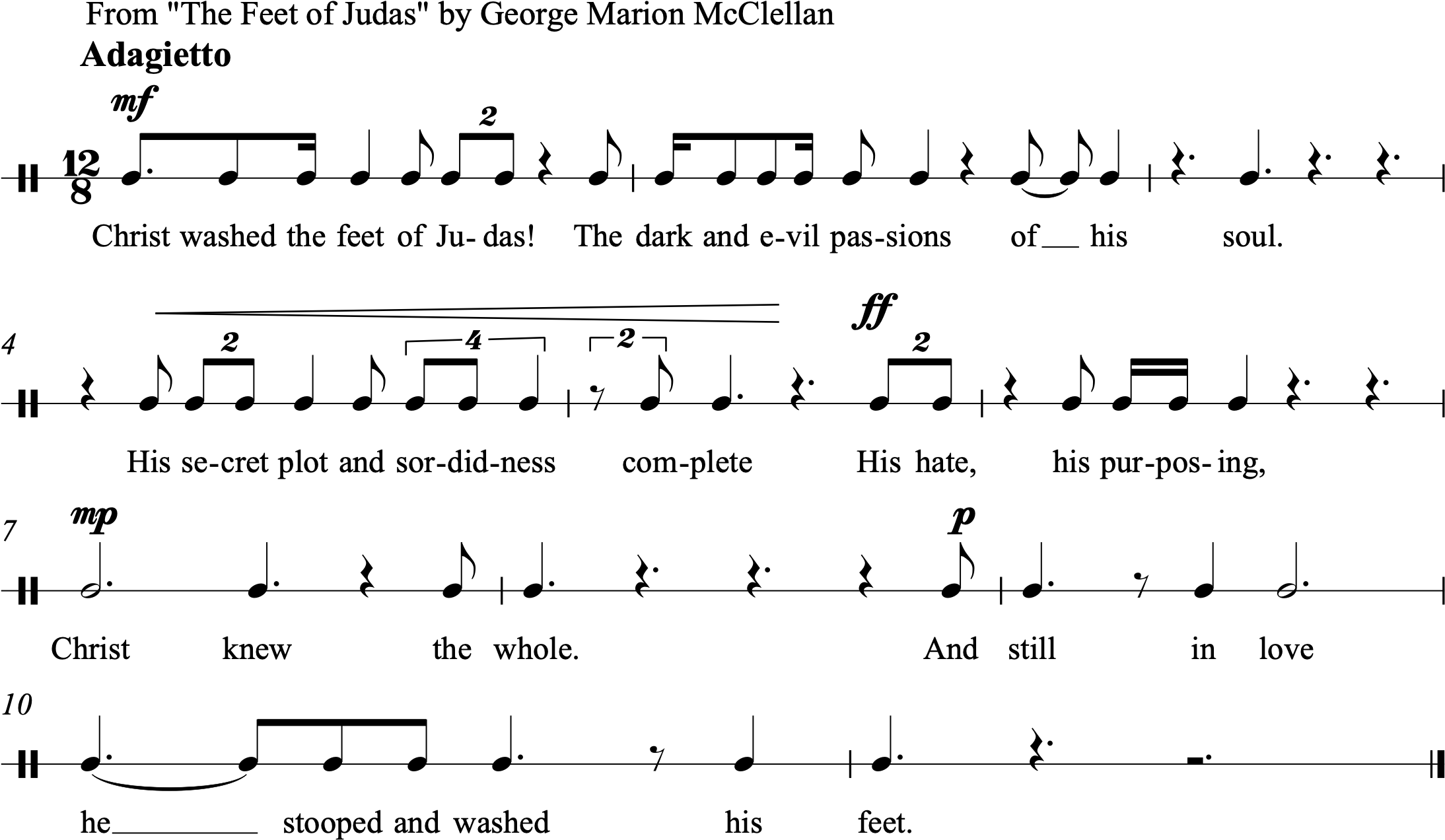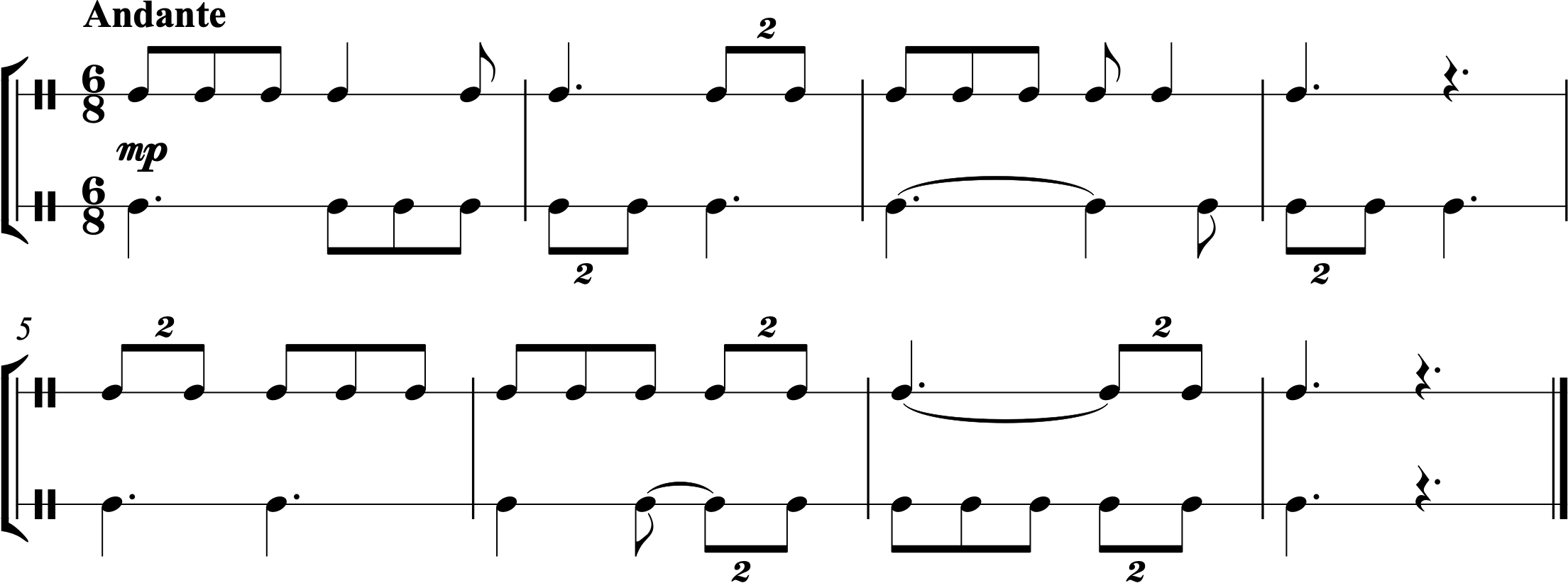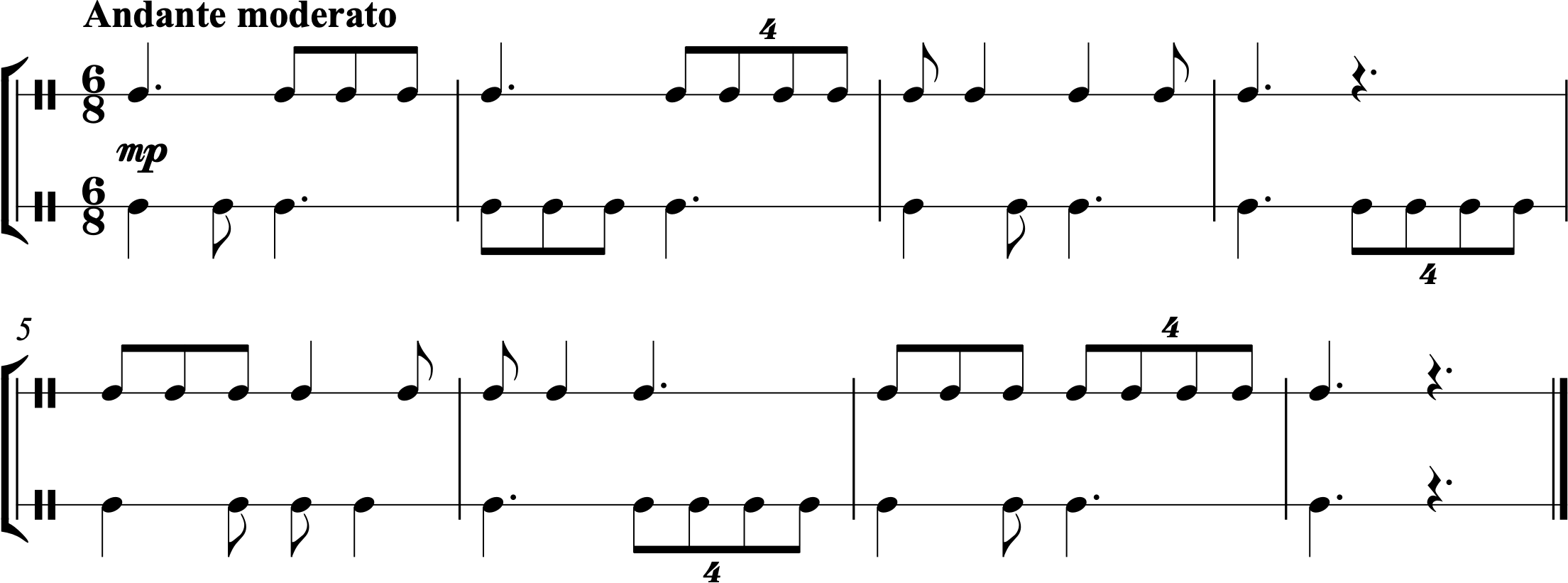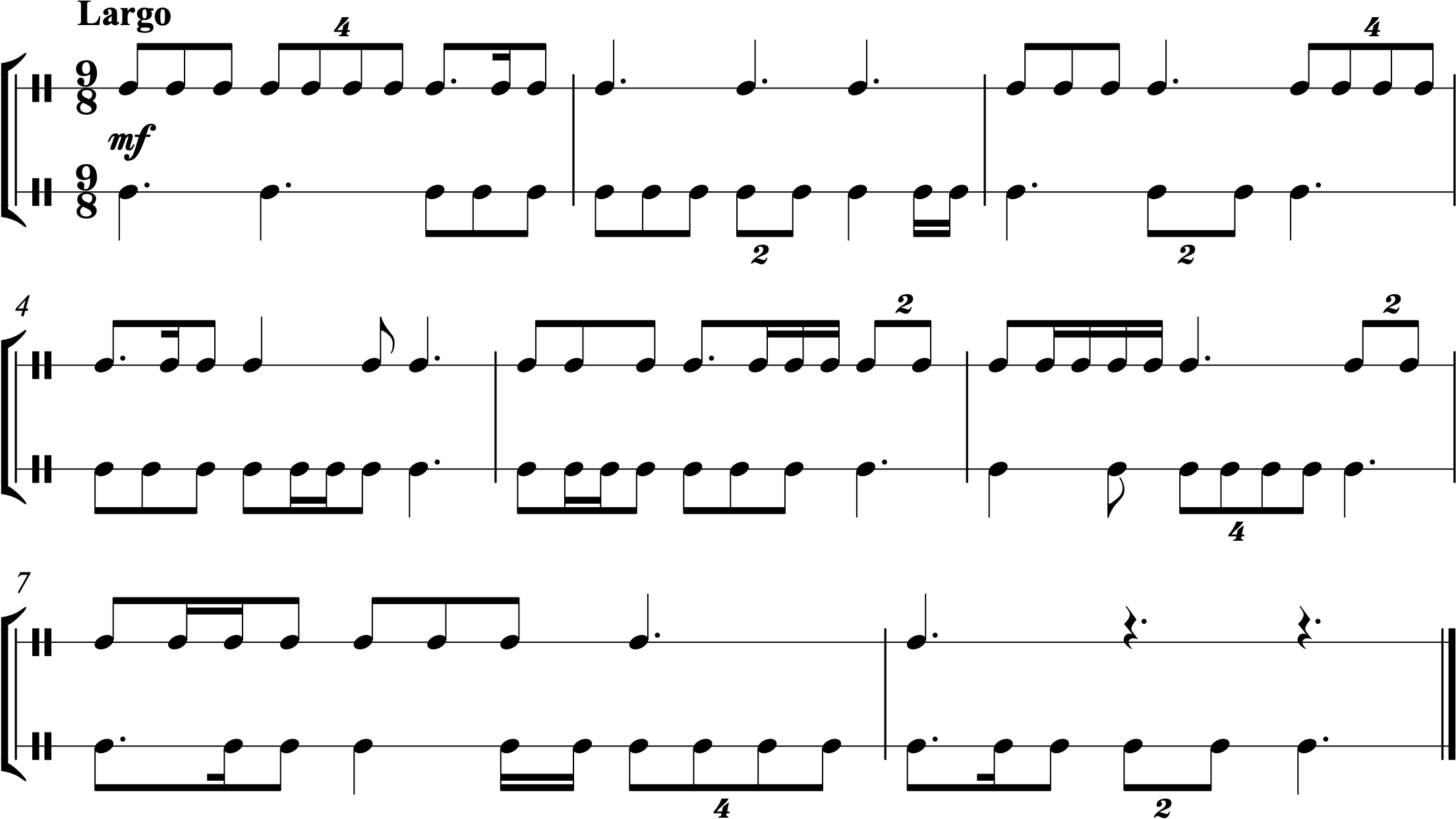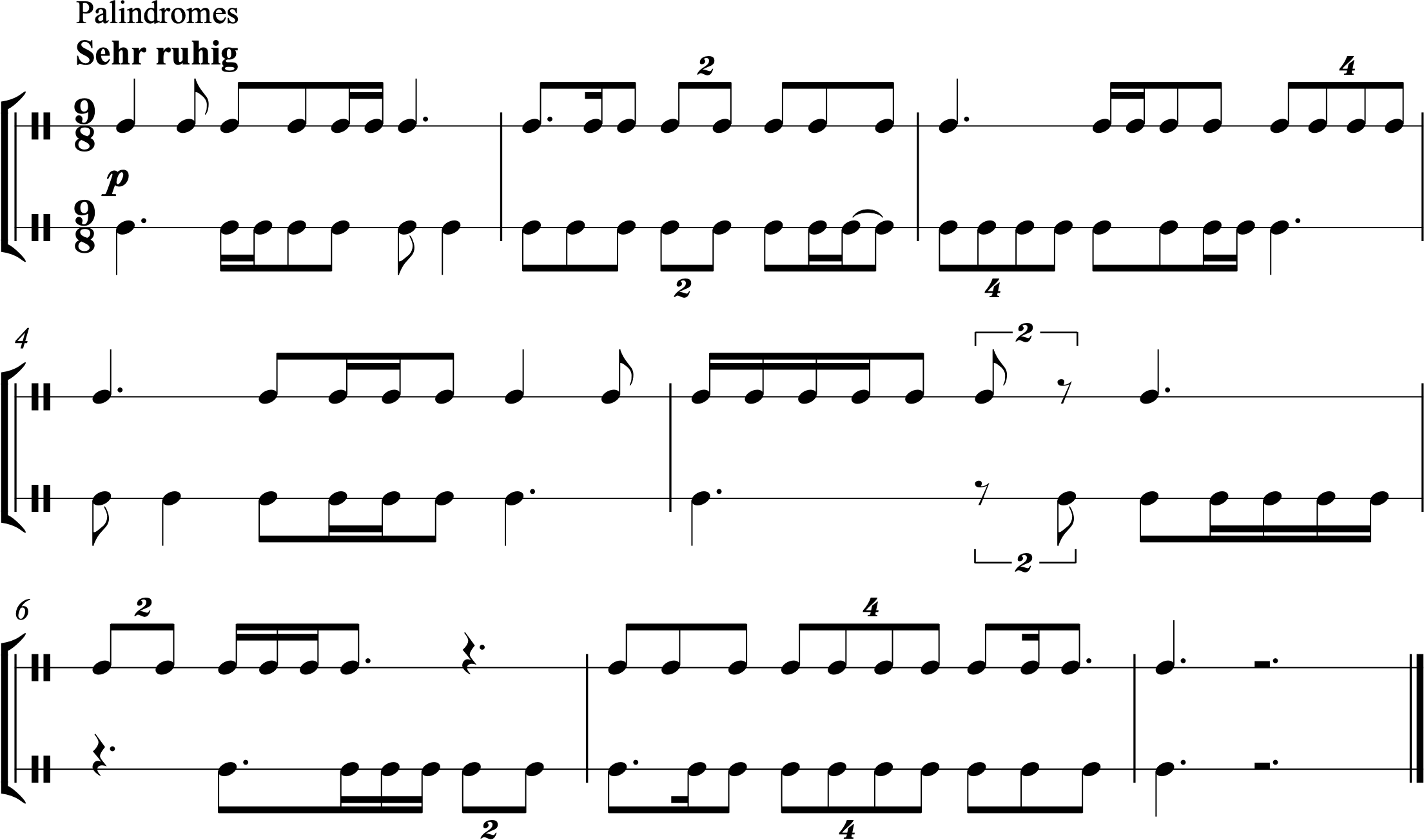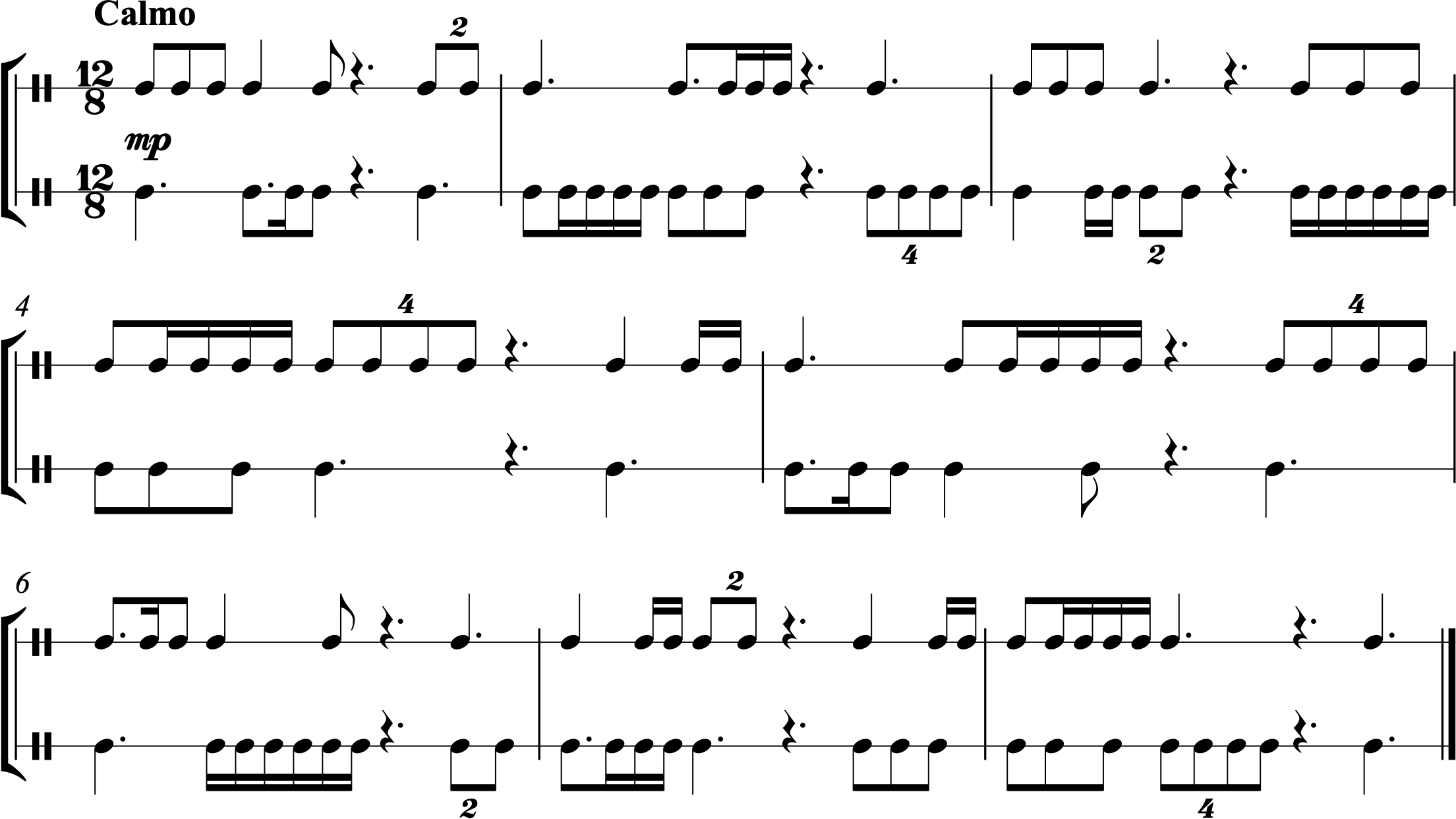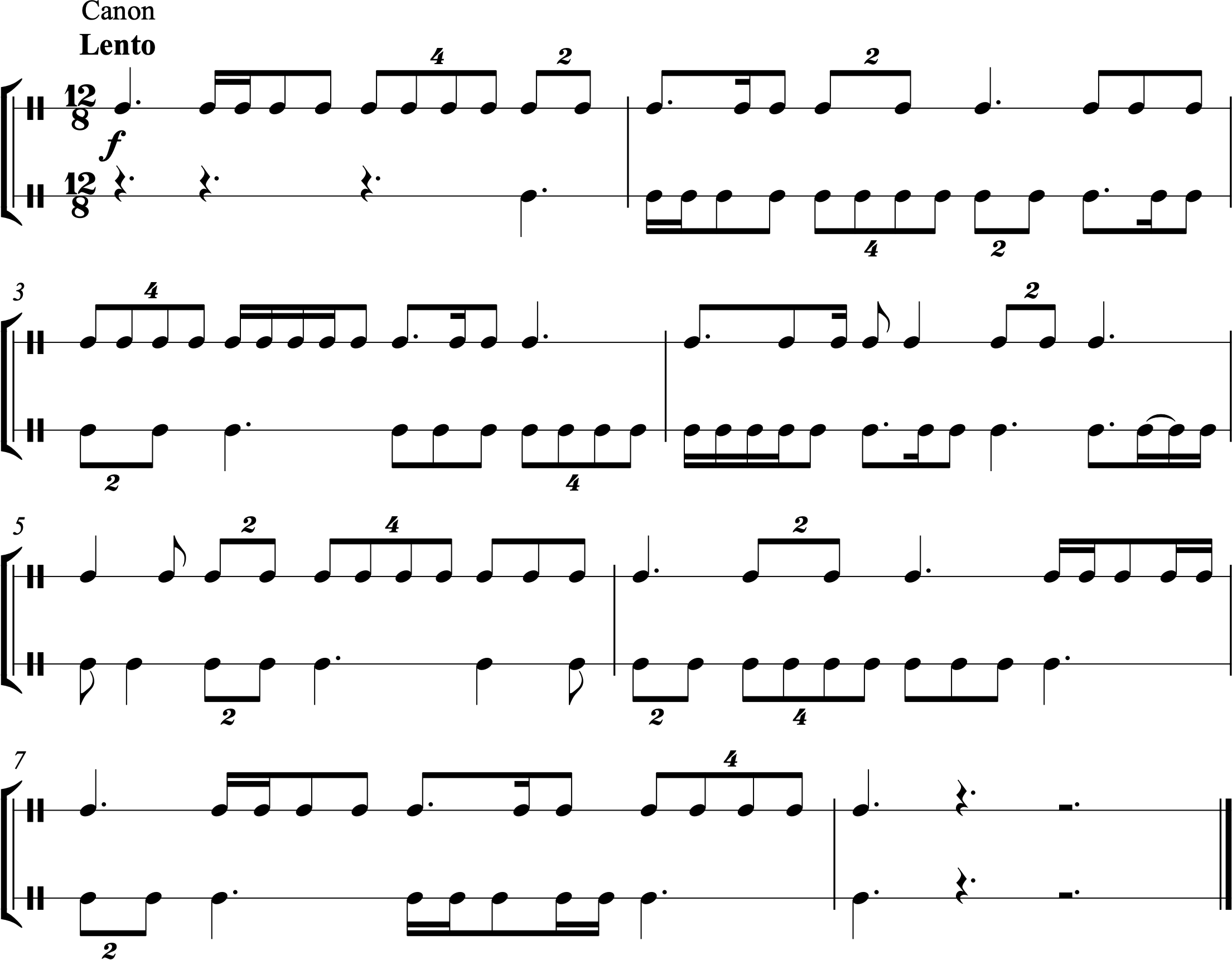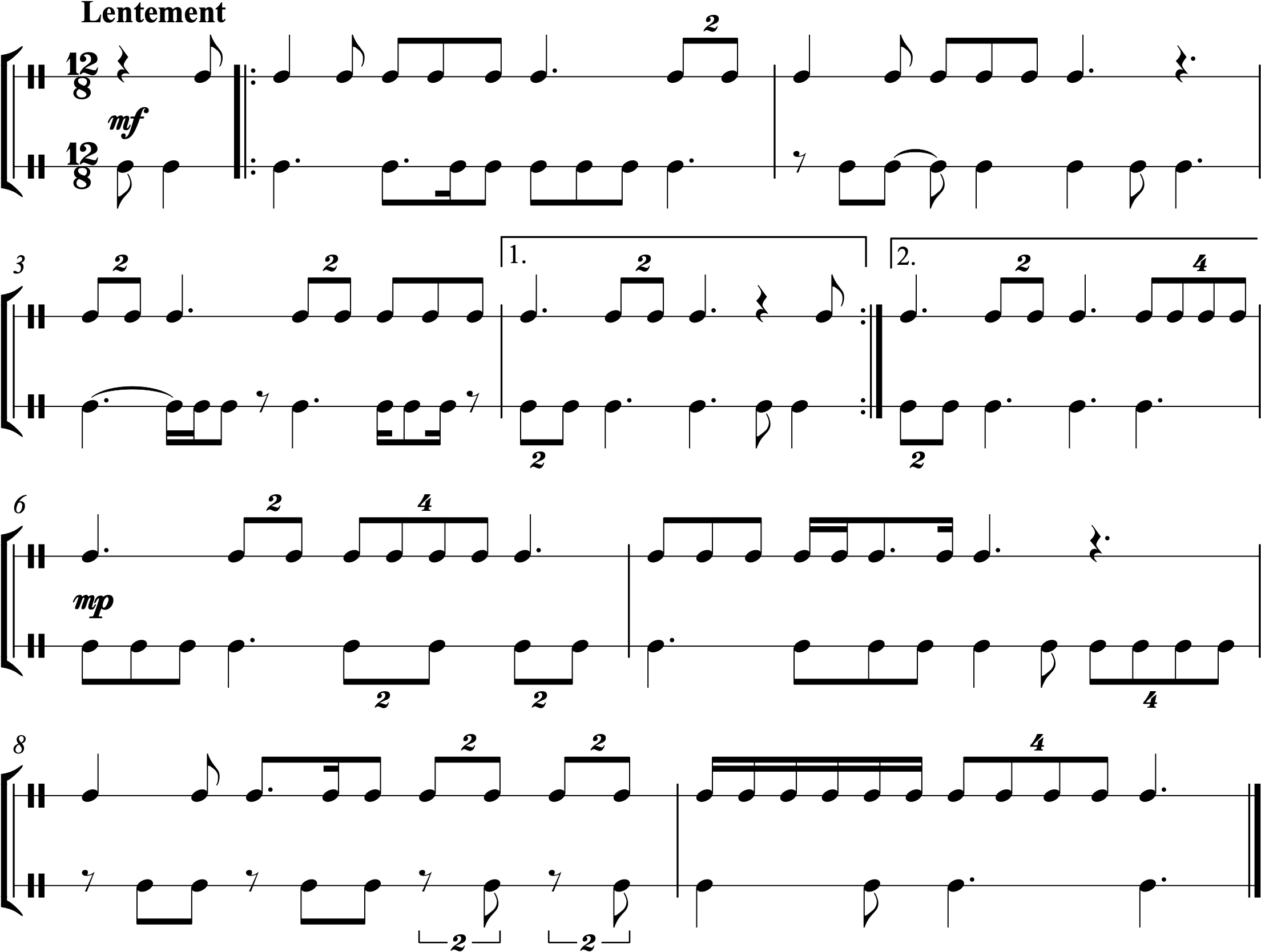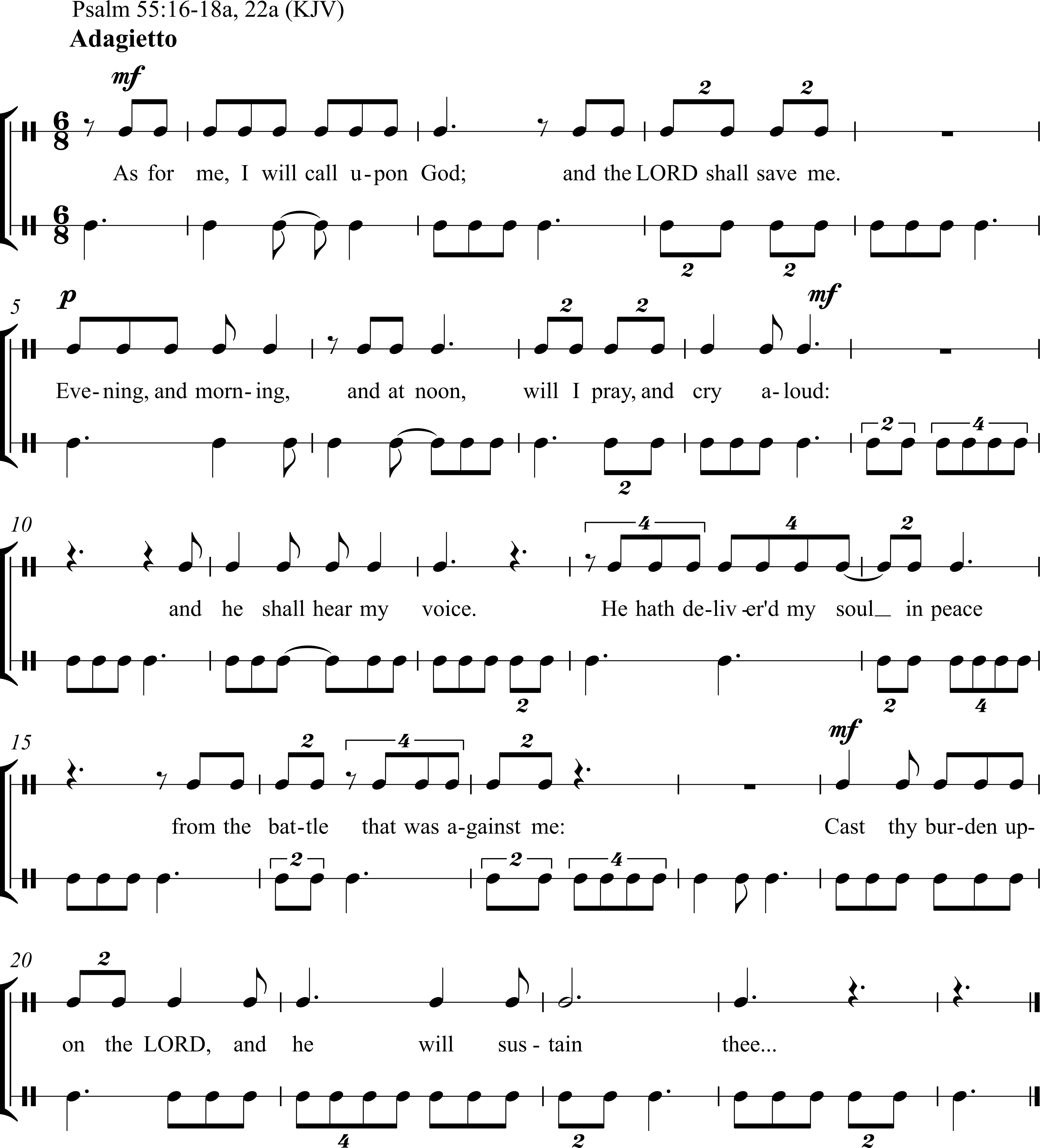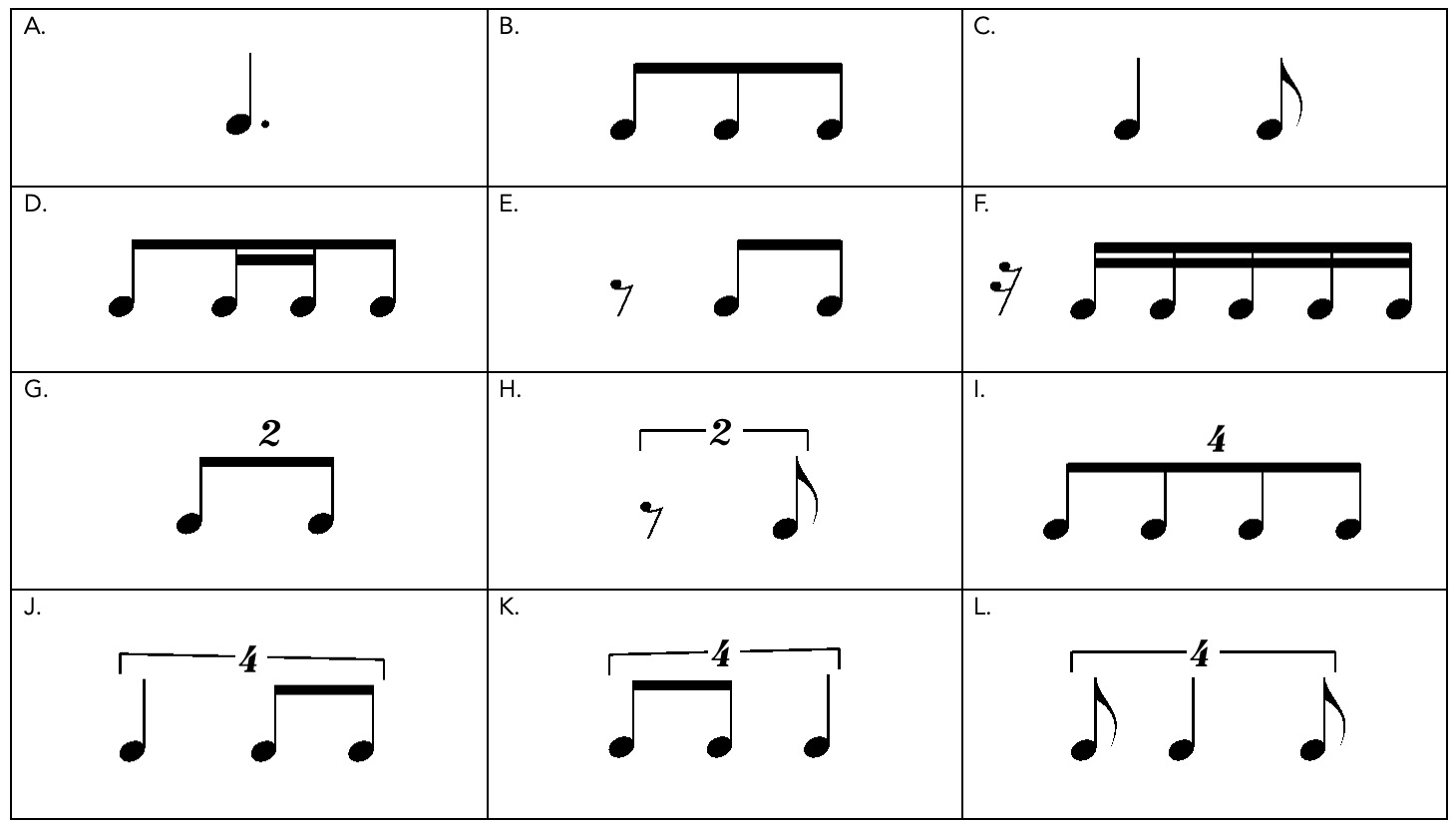Chapter 11: Compound Meter—duplets and quadruplets
About This Chapter
About This Chapter: In Chapter 10, we focused on borrowing compound divisions into simple meter (triplets and sextuplets). In this chapter, we’ll focus on borrowing simple divisions into compound meter. As we know, the normal division of a beat in compound meter is into three parts; the subdivision is into six parts. However, we can borrow from simple meter to divide the beat into two equal parts (duplets) or four equal parts (quadruplets).
In the example below, measure 1 shows the typical division of compound meter beats into three parts. Measure 2 divides each beat into two equal parts instead. We borrow the syllables “1 &” from simple meter for these duplets. Measure 3 divides the beat into four equal parts (quadruplets). Again, we borrow syllables from compound meter: “1 e & a.”
Notation: How do you know which note values to use for a duplet or quadruplet? The principle in Chapter 10 was to use the rhythmic value of the closest normal division below the irregular division. This is still true for quadruplets: we’re dividing into 4 parts, and the closest normal division below 4 is 3, so we’ll use the rhythmic value that divides the beat into 3 equal parts. However, the duplet is an exception! For the duplet, we’ll actually go the opposite way—we’re trying to divide the beat into 2 equal parts, but we’ll go up to the closest normal division (3) and use that rhythmic value. Although this breaks the normal process, it has become the prevailing way to notate duplets (though some composers choose to follow the normal process and use the rhythmic value of the beat for duplets instead).
Section A—Introduction to duplets
Practice
Practice A:
Practice by performing along with this audio file, which features a metronome click and the notated rhythm. You will hear one measure of wood block to establish the tempo before the exercise begins.
Next, try performing along with this audio file, which features the notated rhythm but no metronome click. You will hear one measure of wood block to establish the tempo before the exercise begins.
1.
2.
3.
4.
5.
6.
7.
8.
Section B—Introduction to quadruplets
Practice
Practice B:
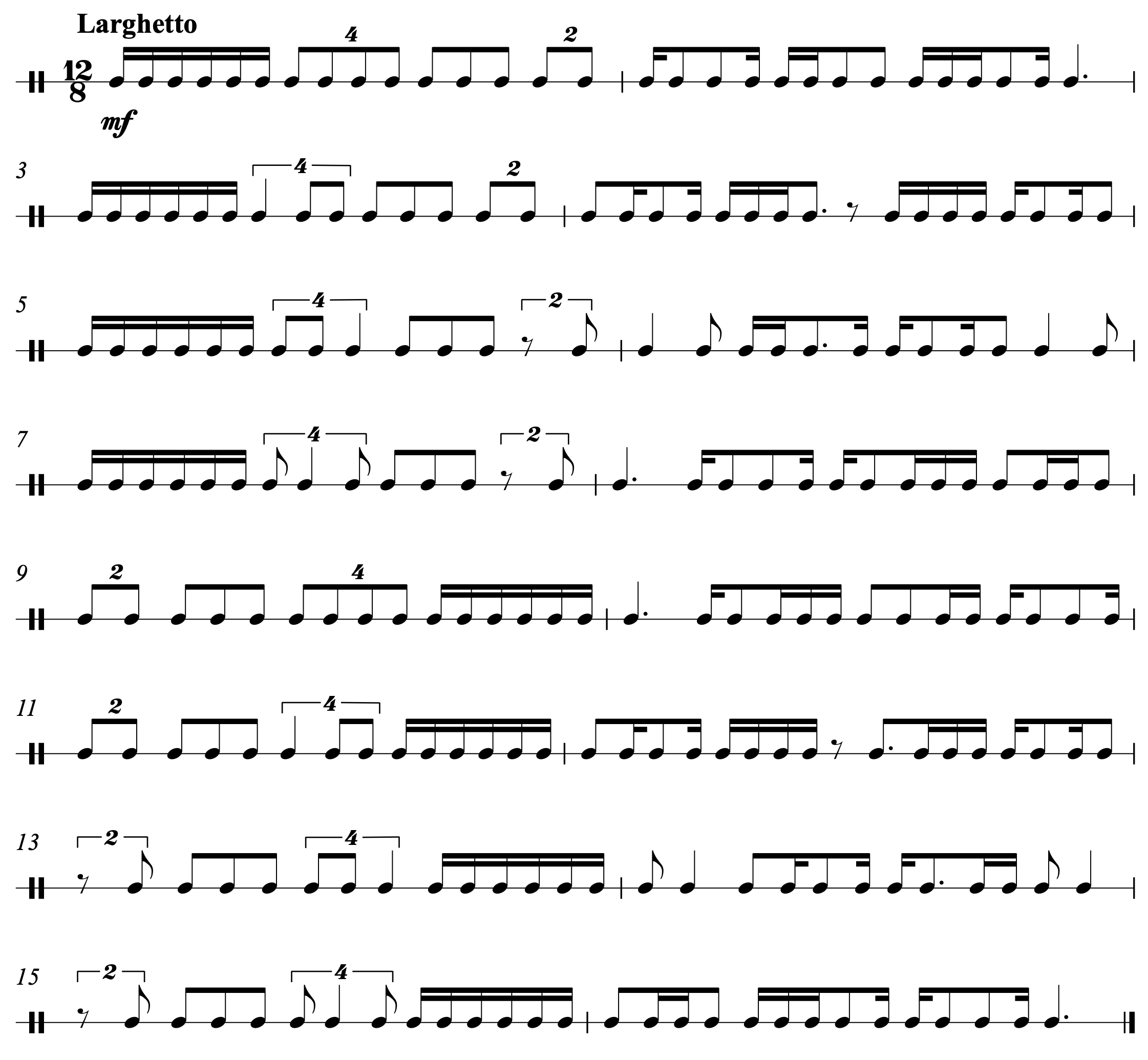 Practice by performing along with this audio file, which features a metronome click and the notated rhythm. You will hear one measure of wood block to establish the tempo before the exercise begins.
Practice by performing along with this audio file, which features a metronome click and the notated rhythm. You will hear one measure of wood block to establish the tempo before the exercise begins.
Next, try performing along with this audio file, which features the notated rhythm but no metronome click. You will hear one measure of wood block to establish the tempo before the exercise begins.
9.
10.
11.
12.
13.
14.
15.
16.
17.
18.
19.
20.
21.
22.
23.
Section C—Two-part rhythms featuring duplets and quadruplets
24.
25.
26.
27.
28.
29.
30.
31.
32.
33.
34.
35.
Rhythmic Cells
- For general suggestions on how to use these rhythmic cells, see Appendix: How to Use Rhythmic Cells.
- The first two rows feature rhythms that align with the usual divisions of compound meter, while the last two rows feature rhythms that are borrowed from simple meter (division of the beat into two parts instead of three). Experiment with combining compound and simple meter beats.
Rhythm in Context
Rhythm in Context example coming soon!
Citations
Poem:
- George Marion McClellan (1860–1934), “The Feet of Judas,” public domain. From Poems, published 1895, by A.M.E. Church Sunday School Union, Nashville, TN.
Psalm:
- Scripture taken from the KJV, 1987, public domain.
Rhythm in Context:









